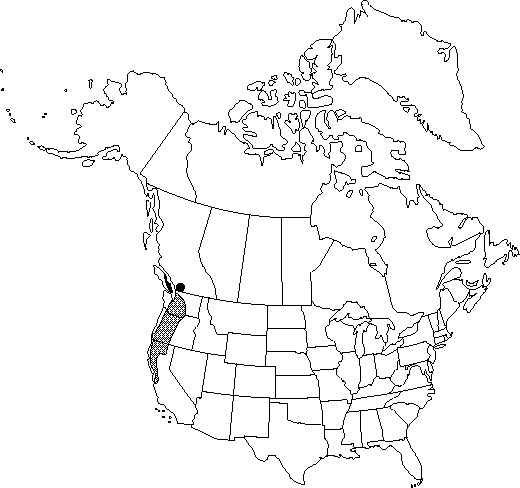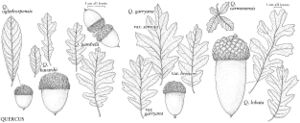Difference between revisions of "Quercus garryana var. garryana"
EndemicIllustrated
Treatment appears in FNA Volume 3.
FNA>Volume Importer |
imported>Volume Importer |
||
| (2 intermediate revisions by 2 users not shown) | |||
| Line 49: | Line 49: | ||
|publication year= | |publication year= | ||
|special status=Endemic;Illustrated | |special status=Endemic;Illustrated | ||
| − | |source xml=https:// | + | |source xml=https://bitbucket.org/aafc-mbb/fna-data-curation/src/2e0870ddd59836b60bcf96646a41e87ea5a5943a/coarse_grained_fna_xml/V3/V3_1032.xml |
|genus=Quercus | |genus=Quercus | ||
|section=Quercus sect. Quercus | |section=Quercus sect. Quercus | ||
Latest revision as of 21:45, 5 November 2020
Trees, to 20 m, trunks usually solitary. Twigs yellowish or brown, persistently puberulent, with spreading hairs. Buds yellowish or cream, usually fusiform, 6-12 mm, apex acute, densely pubescent. Leaf blade abaxially light green, velvety to touch, sparsely to densely covered with erect simple and (2-)4-5(-6)-rayed hairs 0.3-1 mm.
Phenology: Flowering spring.
Habitat: Oak woodlands, margins of redwood forests, mixed evergreen forests
Elevation: 0-800 m
Distribution

B.C., Calif., Oreg., Wash.
Discussion
Quercus garryana var. garryana possibly extends to Los Angeles County as isolated trees in riparian situations.
Selected References
None.
Lower Taxa
None.
